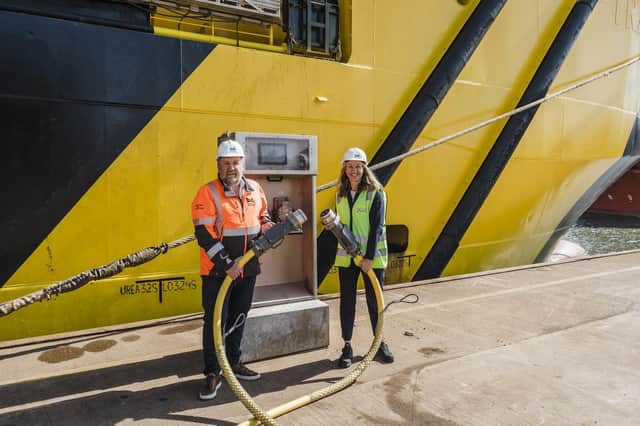Innovative scheme to reduce ships’ emissions at Montrose Port


The system aims to reduce harmful emissions, noise pollution and fuel consumption and the innovation takes MPA closer to reaching its ambition of becoming Scotland’s first carbon neutral port.
Plug Montrose, is the result of a pioneering £1 million investment and collaboration between the port authority and Plug Shore Power Ltd, the UK-based branch of leading Norwegian shore power and maritime charging company, Plug AS.
Advertisement
Hide AdAdvertisement
Hide AdThe joint venture highlights MPA's commitment to reducing carbon emissions and promoting cleaner energy practices within the maritime industry.
It also marks Plug's first venture in the UK following successful collaborations with several Norwegian ports to develop shore power infrastructure, starting with its initial project in Bergen in 2018. Shore power provides vessels with the option to shut down their engines and connect to the grid while berthed, eliminating the need to run their engines to power onboard systems, thereby reducing emissions, fuel consumption and noise pollution.
The facility is now operational on berths 1 and 2, following a significant upgrade to the port's substation and quayside infrastructure by Scottish and Southern Electricity Networks (SSEN). The inaugural connection was made by the Norwegian vessel, Magne Viking, from Viking Supply Ships and a regular visitor to the port.
Captain Tom Hutchison, MPA chief executive, said: “By embracing innovative solutions like shore power, we’re not only reducing our environmental footprint but positioning Montrose as a leader in sustainable port operations. We’re excited about the potential of expanding this facility to all berths."
Advertisement
Hide AdAdvertisement
Hide AdMaria Bos, Plug CEO, added: “We eagerly anticipate the positive impact this facility will have on the environment and for the town of Montrose. We’re excited to track the usage and witness the tangible benefits it brings, reaffirming our commitment to sustainability and innovation in the maritime sector.”